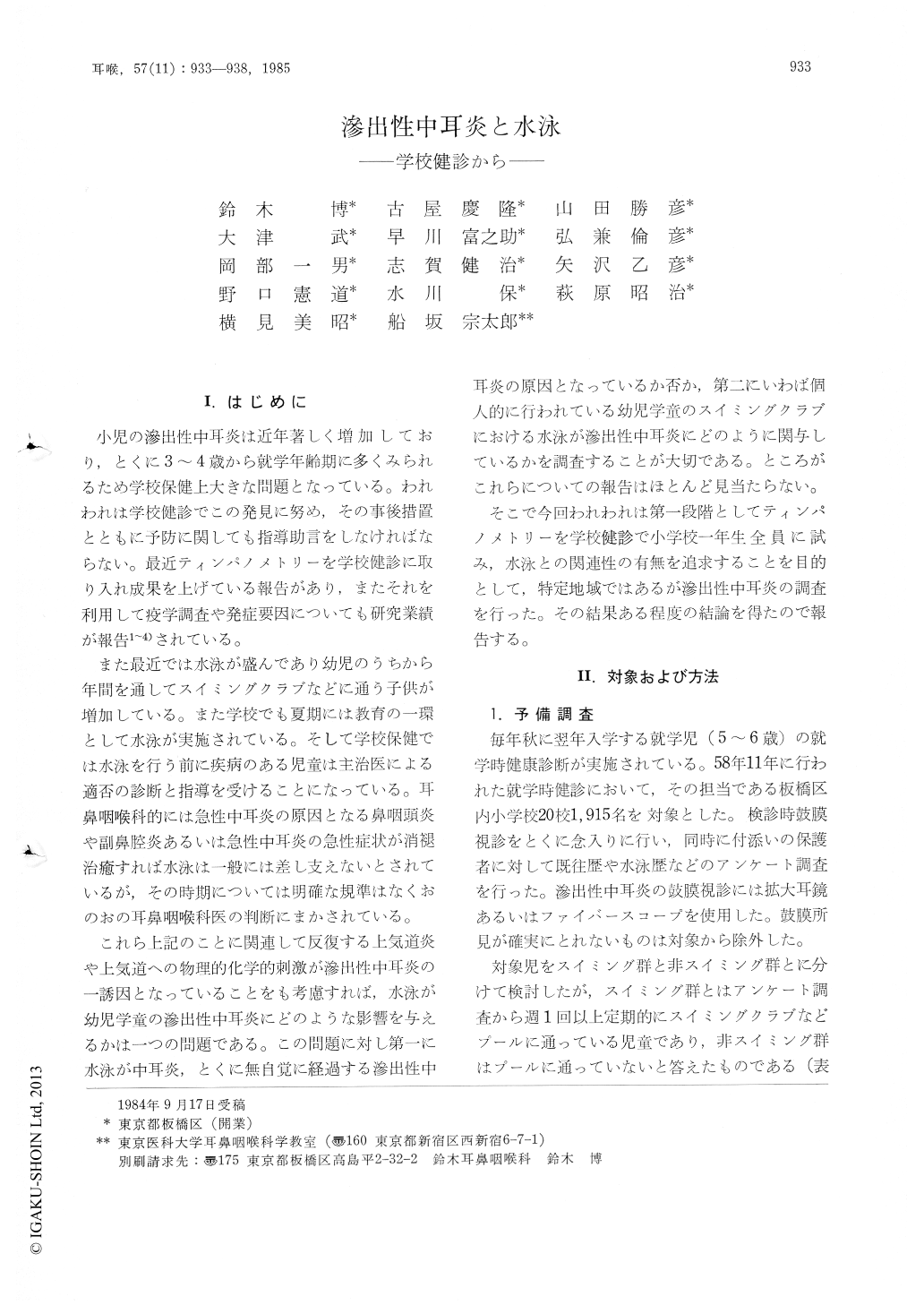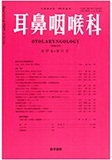Japanese
English
- 有料閲覧
- Abstract 文献概要
- 1ページ目 Look Inside
I.はじめに
小児の滲出性中耳炎は近年著しく増加しており,とくに3〜4歳から就学年齢期に多くみられるため学校保健上大きな問題となっている。われわれは学校健診でこの発見に努め,その事後措置とともに予防に関しても指導助言をしなければならない。最近ティンパノメトリーを学校健診に取り入れ成果を上げている報告があり,またそれを利用して疫学調査や発症要囚についても研究業績が報告1〜4)されている。
また最近では水泳が盛んであり幼児のうちから年間を通してスイミングクラブなどに通う子供が増加している。また学校でも夏期には教育の一環として水泳が実施されている。そして学校保健では水泳を行う前に疾病のある児童は主治医による適否の診断と指導を受けることになっている。耳鼻咽喉科的には急性中耳炎の原因となる鼻咽頭炎や副鼻腔炎あるいは急性中耳炎の急性症状が消褪治癒すれば水泳は一般には差し支えないとされているが,その時期については明確な規準はなくおのおの耳鼻咽喉科医の判断にまかされている。
At the health check of primary school children, otoscopic and tympanometric examinations were performed for 1629 new corners (1st grade). The purpose of this study was to clarify the correlation between serous otitis media and swimming, and the correlation between serous otitis media and upper respiratory tract infection (URTI). Serous otitis media were found at 9.0% of total new corners. The followings are the conclusion of this survey.
1. There was no significant difference in the incidence of serous otitis media between the swimming group (regular swimmer in swimming clubs) and non-swimming group.
2. The incidence of serous otitis media was significantly higher in URTI group than in non-URTI group, but URTI rate showed no difference between the swimming group and non-swimming group.
3. The above results do not mean that swimming is permitted regardless of the upper respiratory tract condition, but the check before swimming should be strictly performed for protection of serous otitis media.

Copyright © 1985, Igaku-Shoin Ltd. All rights reserved.


